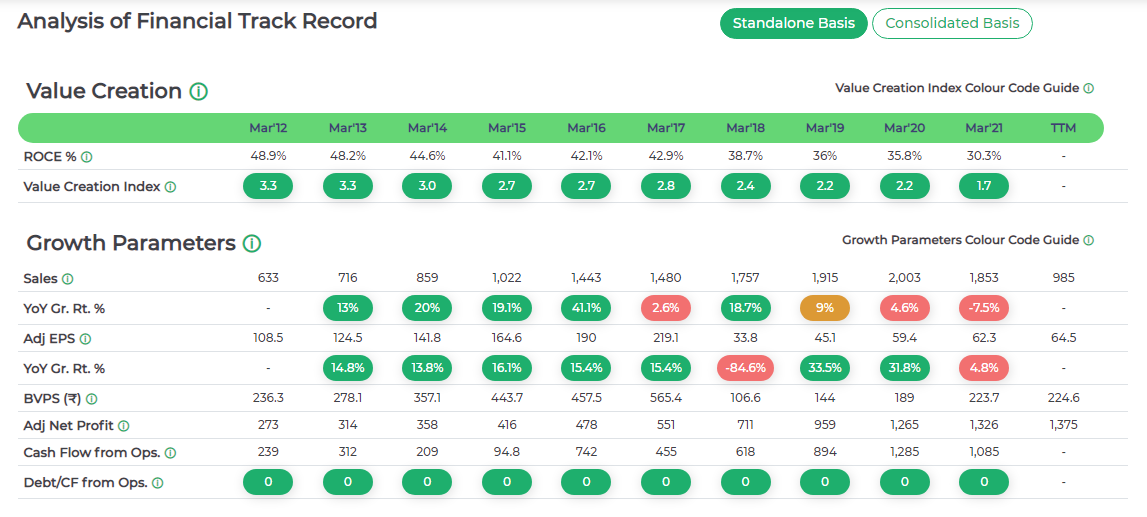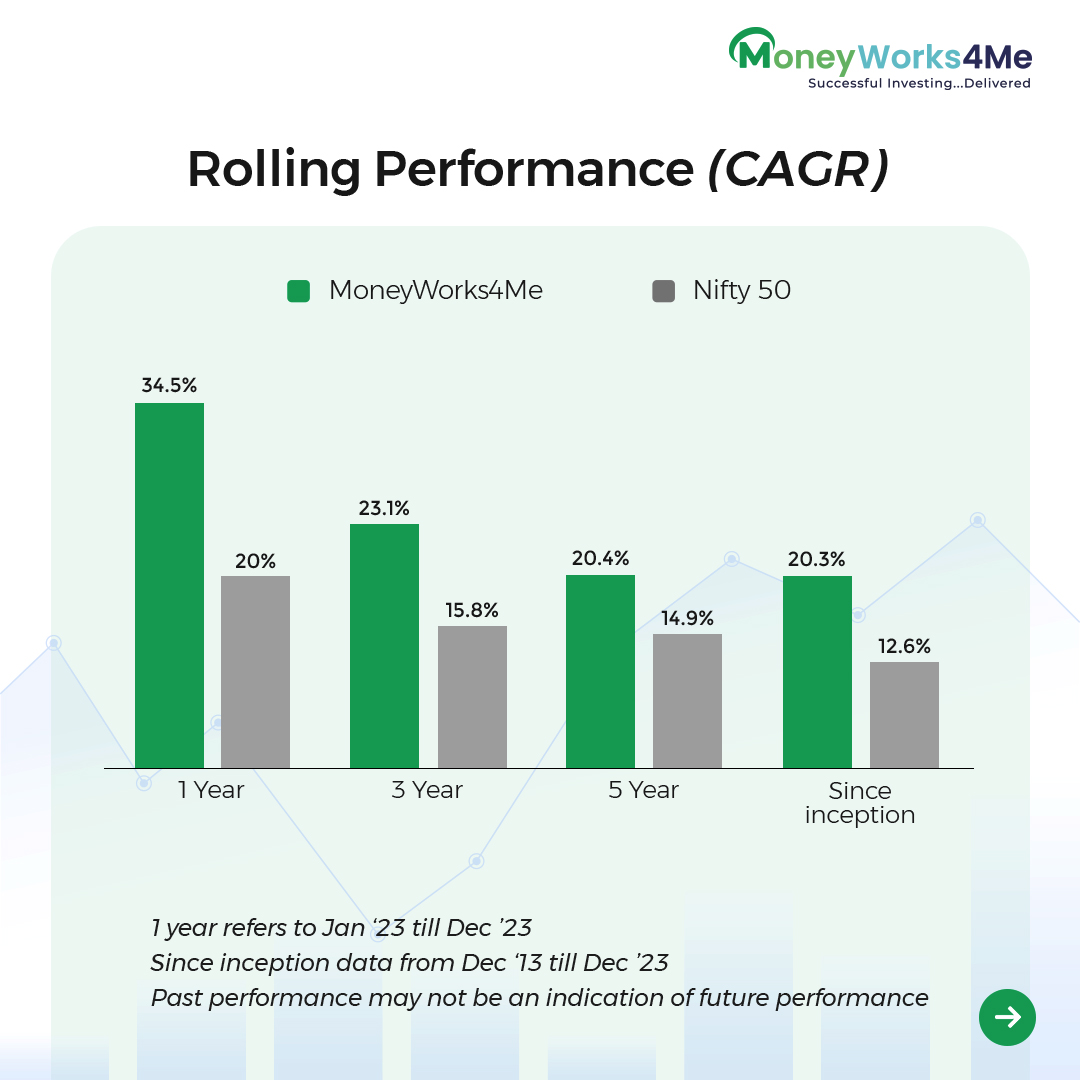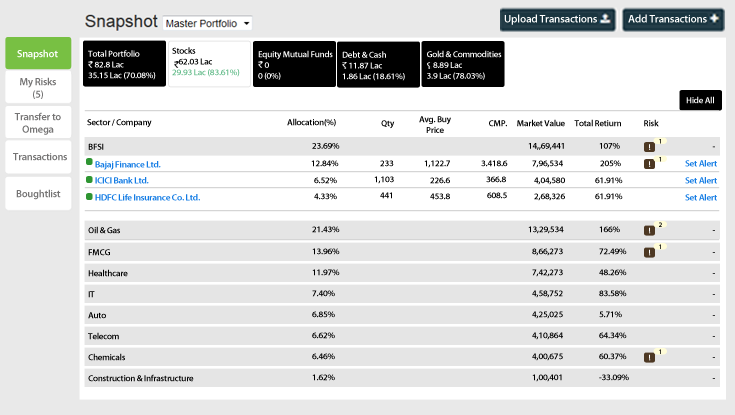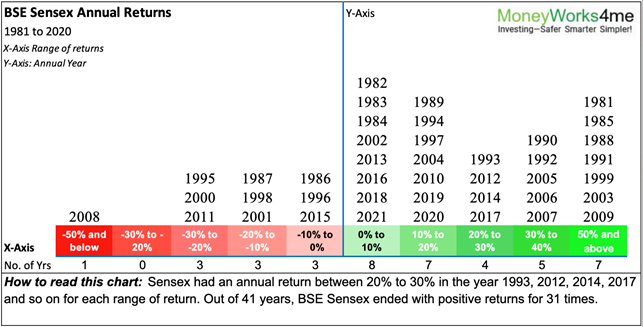Company Performance on key parameters over 10 years

Assess Management

Check important latest numbers

Calculator & Charts that help access right price

To build and manage a portfolio in a way that enables you to
Deploy surplus in best opportunities available currently.
Manage your portfolio with conviction with access to our research.
Add Core stocks (quality large cap) when available at reasonable prices to earn higher returns.
Invest in Booster stocks (quality small & midcap) at attractive prices from time to time to boost returns.
Strong brands, deep distribution, switching cost, patents, low cost enables them maintain growth and profitability even in difficult conditions.
These businesses have people, processes, and systems in place to weather most challenges.
These companies are widely analyzed and attract large number of investors ensuring long term stock prices reflect company performance.
They are the last to be impacted in times of economic downturns and first to recover as they have high bargaining power and robust management.
Strong brands, deep distribution, switching cost, patents, low cost enables them maintain growth and profitability even in difficult conditions.
These businesses have people, processes, and systems in place to weather most challenges.
These companies are widely analyzed and attract large number of investors ensuring long term stock prices reflect company performance.
They are the last to be impacted in times of economic downturns and first to recover as they have high bargaining power and robust management.
Quality smaller size companies that are growing rapidly can deliver higher returns in long term.
Smaller companies not on Institutional investors radar creating high returns opportunities due to deep undervaluation.
More than 300 potentially Booster stocks to choose from and new ones emerge over time presenting good opportunities to invest.
Booster Stocks have higher volatility in the short term which if managed well generates superior returns.
Quality smaller size companies that are growing rapidly can deliver higher returns in long term.
Smaller companies not on Institutional investors radar creating high returns opportunities due to deep undervaluation.
More than 300 potentially Booster stocks to choose from and new ones emerge over time presenting good opportunities to invest.
Booster Stocks have higher volatility in the short term which if managed well generates superior returns.







Superstars 100 Multicap helps you build a strong portfolio using multiple methods
The portfolio will comprise of mix of stable companies with high profitability and companies that are at the cusp of upcycle with strong medium term prospects. Most of the companies will be high quality when measured in Return on Capital Employed and high free cash flows. We do not participate in highly cyclical sectors like mining, metals or commodities as they do not deliver consistent returns.
At MoneyWorks4me, we believe that multi-cap approach, mix of Core and Booster stocks, helps to achieve consistent performance with relatively less volatility. There is no point investing in an asset that is so volatile and inconsistent that you cannot stay invested in it to realize those high returns.
A mix of Core and Booster stocks helps you stay invested and recover faster from correction with help Core stocks and realise healthy returns.
Market levels or single valuation metric of a broad market doesn’t tell much about return potential of all stocks in the market. It is market of stocks and not one stock market. What it means is, there are 100s of companies listed that might be at different stage in cycle. Individual stocks may have more upside potential than narrow index like Nifty 50 or Sensex 30.
A stock price moves in lines with earning growth. Even though all stocks move in same direction in short term, their trajectories vary over longer timeframe.
Let’s assume the worst period with the benefit of hindsight when Nifty peaked in Dec’07 and 3 years after that.
If we observe individual stocks, we can see that markets made high in Dec’07, went through correction of 50%, and recovered in Dec’10. During this period Nifty was flat but more than 40% of stocks earned positive returns. Out of 185 large and mid-cap stocks (BSE Group A), 78 were positive, and more than half earned >13% CAGR. Together these 78 stocks earned >17% CAGR.
This proves a point that market levels must be used only in context of asset allocation to reduce equity and add to debt. If one can find enough bargains with good future prospects, he can remain invested.
We have developed a unique measure Nifty@MRP and Sensex@MRP, which is a hypothetical value of the Nifty/Sensex if all the 50/30 stocks were fairly valued. We have analysed the actual movement of the market vis-à-vis Nifty@MRP and Sensex@MRP for more than 5 years (real time) and back-tested our hypothesis over more than a decade. This has enabled us to confidently assess whether the market is over-valued or under-valued at any point of time.
Investors often focus on price rather than looking at upside potential. We always suggest making decision based on upside potential of an opportunity set. Our Upside Potential is evaluated based on current price. You may have missed the stock at Rs. 100 but even at Rs. 200 the same stock might be offering ‘More than 15% CAGR’ or ‘10-15% CAGR’. Instead of worrying about buying high, focus on upside potential even from the current price on fresh investment. Upside Potential is given for all stocks that we cover and it is on the basis of next 5 years. Remember this is not a precise tool, but surely a very good elimination process.
Low upside potential: With our proprietary price calculator and future estimates, we update valuation of best 200 stocks across large, mid and small cap. Using the same, we compute upside potential of stocks over 3- 5 year period from current price. While one cannot be 100% confident about future upside, if the upside is significantly lower than liquid fund returns based on valuation, we choose to exit. One doesn’t have to earn the last nickel out of every investment. Our aim is to earn reasonable returns on overall portfolio, not necessarily own stocks till they peak out.
Change in future prospects: Capitalism is very competitive. As soon as a company does well, competition can come in either with similar products or disruptive one to ruin the profitability. This leads to deterioration of profits and company’s downfall. In such cases, we would like to exit the investment. Other situations we exit is when the management of the company may treat minority shareholders unfairly which can lead to steeper loss over long term.
Equity returns are not linear like Fixed Deposits. They are erratic and returns can be concentrated in few years. So even equity does not earn positive returns every year, longer term investing is highly in our favour.
Past data shows equity returns are positive in 31 out of 41 years. There will be only one year out of four years of negative return. Out of 31 positive years, Equity earned more than 20% returns in 16 years. However, the returns were quite volatile during the year. It is advised to review equity return on annual basis versus monthly/quarterly. Longer investment period of 5 years or more has very high chances to earn healthy absolute returns.
Investing is a probabilistic field where you win or lose with no guaranteed outcome. Probabilistically, if you own a portfolio of good quality stocks, bought at reasonable prices and held for long term it is fair to assume you will definitely profit from stock investing.
Historically we had 85% calls turned into profits and 70% calls beat Index return. Investing is very rewarding as the calls that deliver positive returns ranged from 100-800% returns more than compensate for losses of 10-30-50%. Winners far FAR outweigh losers. So one has to consciously avoid looking at individual stock performance and focus on portfolio returns.
Focus on long term: Equity returns are erratic; do not get impatient in down years. Even if you invested just before correction (it can happen because no one can anticipate correction) stick with equity for 3 years minimum. Add more in form of SIP during correction phase with whatever amount you can afford and lower your purchase cost. Markets tend to recover eventually which will recover your older investments and also earn handsome returns on investments made during correction.
Diversify: Most investors do not diversify adequately, instead concentrate in just 3-4 favourite stocks. Future is uncertain and you do not have all the information today. Do not leave investing to luck and get hurt concentrating in few stocks. Diversify as instructed, upto Maximum recommended allocation. While there are no guarantees on individual stocks, portfolio of stocks will deliver very good returns over time.
Ensure you act on our calls: It is not possible to develop high confidence immediately on BUY recommendation; buy the stock partially and add more, upto recommended allocation, as your understanding improves. If you miss any big winner, you will start lagging our overall performance.
Use only surplus available for 5 years+: Do not invest funds that you may need before 5 years. It is true that stocks will reward in 3 out of 4 years, but one bad year in stock market should not coincide with your goal that will make you sell your investments at loss. Set aside funds for short term goals and emergency in ultra-safe assets like Fixed Deposits or Liquid Funds.

















